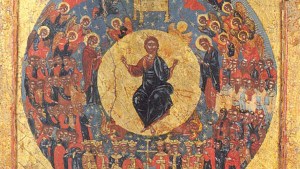Lenten Campaign 2025
This content is free of charge, as are all our articles.
Support us with a donation that is tax-deductible and enable us to continue to reach millions of readers.
In the coastal city of Cádiz (Spain) stands an unassuming chapel with a remarkable claim to fame. The Oratorio de la Santa Cueva may seem humble, but thanks to the vision and determination of its priest, Don José Sáenz de Santa María, this small Spanish church hosted the premiere of Haydn’s The Seven Last Words of Christ – a moment that linked the unpretentious chapel to the great traditions of European classical music.
In the late 18th century, Don José was convinced that sacred music could enhance the faith of his parishioners and help them meditate on the mysteries of Christ. Wanting to bring something special to his Good Friday services, he decided to commission a new piece of music specifically for his congregation. But instead of looking for a local composer, Don José reached across Europe and contacted Haydn himself, already famous for his symphonies and operas. The result of this bold move was one of Haydn’s most profound works.
Haydn composed The Seven Last Words of Christ as a series of orchestral movements, each reflecting Christ’s last words from the cross. The music was intended to be meditative, offering moments of reflection during the Good Friday service. It was a grand composition meant for a small, sacred space, and its premiere in the Oratorio de la Santa Cueva added an air of solemnity and spiritual depth to the already holy occasion.
The most charming detail, however, is the setting. The Oratory is not an immense basilica or cathedral – it is, again, a rather humble chapel. Yet the locals packed the place to hear Haydn’s masterpiece, standing shoulder to shoulder in eager anticipation. The contrast between the simplicity of the setting and the complexity of the music creates a striking image: a world-class composition debuting in a humble chapel in a then modest Spanish city.
But Don José’s creativity wasn’t limited to the music. After the piece was performed, he found a unique way to thank Haydn for his work. Instead of a simple payment, Don José sent the composer a cake as a token of his gratitude. When Haydn cut into the cake, he found it filled with gold coins – a surprise that would have been as delightful as it was generous. This quirky story of gratitude became part of the legend surrounding the composition.
Today, the Oratorio de la Santa Cueva is a mandatory destination for music and history lovers, a place where art and faith once collided in a uniquely charming way.
Visitors come not only to see the chapel, but also to reflect on their role in bringing one of Haydn’s greatest works to life, in a place where a humble priest, a famous composer, and a cake filled with gold coins became part of an unforgettable chapter in musical history.





